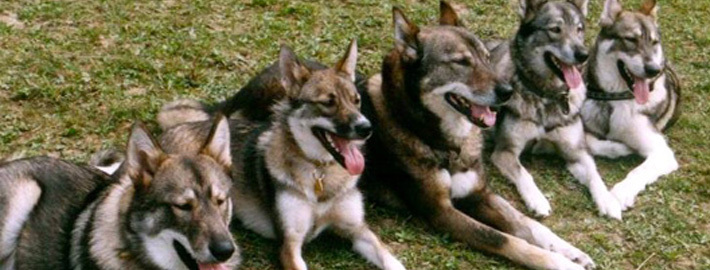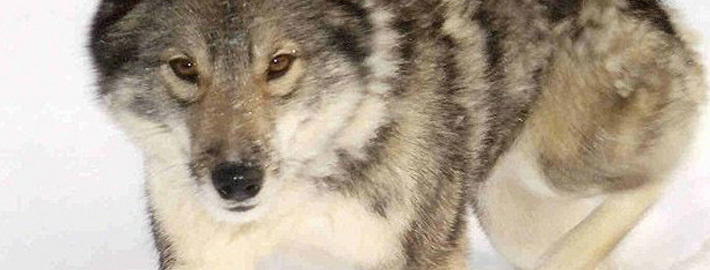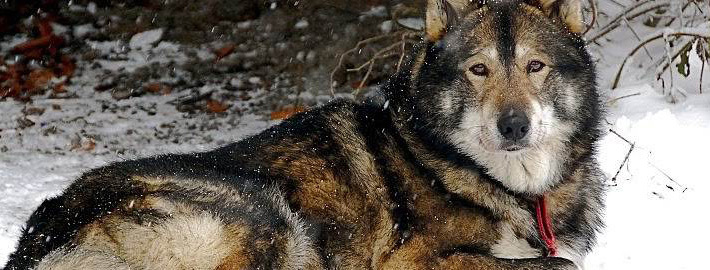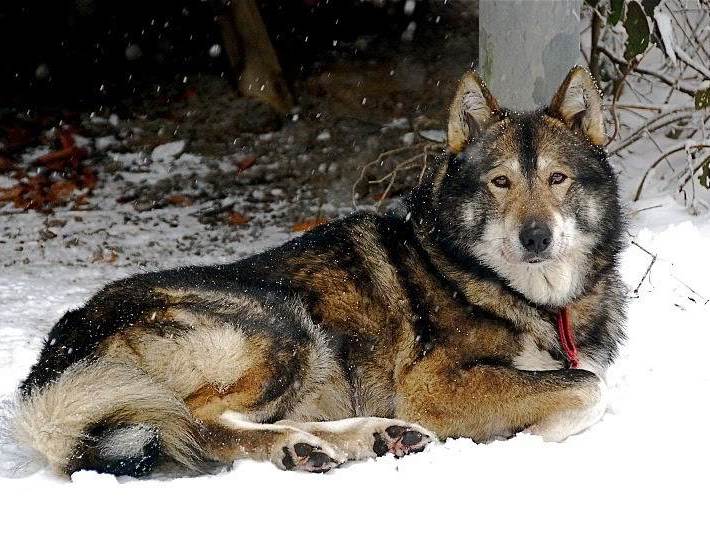What makes the West Siberian Laika Unique?
A medium sized, strong, well built northern race with a wolf-like appearance overall. The race is never heavy or massive. Because arctic conditions in the country of origin, the hair is very important. It has to be double, dense, very hard and not too long.
Breed Groups
- Working Dog Breed
- Medium Size
Page Contents
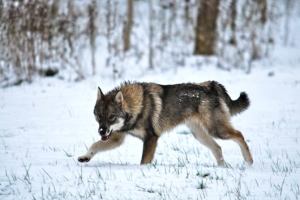
SnapShot
| Size: | Males – 56 to 61 cm (22 to 24 inches) Females – 53 to 58 cm (21 to 23 inches) |
| Weight: | Males – 16 to 23 kg (35 to 50 pounds) Females – 14 to 20 kg (30 to 45 pounds) |
| Origin: | Russia |
| Life Span: | 12-14 years |
| Colour: | 3 Colors, Brown & White, Merle / Spotted / Brindle / Speckled, White / Cream |
| Litter Size: | 6-10 puppies |
Is the West Siberian Laika Right For You?
In 5 Words
- Alert
- Hunter
- Friendly
- Responsive
- Intelligent
Characteristics
Learn About the West Siberian Laika
Description
Most West Siberian Laika (WSL) are some shade of wolf gray, but there are pure white dogs and white dogs with colored patches. Some specimens have the coloration that matches a wolf or coyote almost perfectly, but all WSL have a curled tail carried up over the back, a trait that its wild cousins never have. Since this breed comes from a vast area of Siberia the gene pool is fairly large showing much genetic variation.
Short History of the West Siberian Laika
The West Siberian Laika originally comes from the North Ural and West Siberia. The current breed was developed from two different types. The breed is lighter in build and narrower in head than the East Siberian Laika. It is an all around hunting dog, used on birds and small game and also occasionally on large game.
The West Siberian Laika was recognized by the United Kennel Club on January 1, 1996.
Temperament
Properly raised and trained West Siberians make a tight bond with their masters and never lose contact with them in the forest or in the field. West Siberians are poor guardians at home or for domestic stock. On the other hand, during hunting big and dangerous game they are capable of protecting their human partners to the bitter end.
The West Siberian Laika is a highly active dog. They are also highly territorial and aggressive with other dogs, and so West Siberian Laikas cannot be kept properly in huge kennels. The Russian Standards for West Siberian Laikas changed several times/1947-1966 -1979
Pure bred West Siberians are not so nervous or easily excited as other breeds of Hunting Laikas. They display such a brave, cool, and calculating type of behavior even in the most dangerous situations. It comes as a package along with the ability to work on big game and to track very old, “cold” tracks.
Many dogs imported from Kazakhstan show a brown coat or brown markings on the coat. They show such a fault as a result of crossbreeding with German Shepherds and other breeds. Black, or black and white West Siberian Laikas, frequently appear in litters and are considered by old descriptions of indigenous Laikas as purebred. These colors are unwanted today, because of its associations with the other Russian Laika—the so called Russo-Europeans—that have exactly the same color. The real difference between those two breeds is in the shape of the body and head, and in the character and temperament of the West Siberian Laika..
Caring for Your West Siberian Laika
General Health
The WSL has no known genetic health problems that have been fixated on the breed. The reason for this is because the breed has not been inbred to fix specific showroom characteristics to please bench-show judges. However, this is a concern with many hunters who hear that more and more of these dogs are making their way into modern bench-shows. With the breed being primarily maintained as a hunting breed from West Siberia only healthy proven strong dogs were kept and bred thus genetic diseases have not developed as in other breeds that are bred primarily for show purposes. Inbreeding techniques have not allowed inferior recessive gene traits to become fixated within the breed. As with all dogs, the WSL can catch any canine diseases and parasites, but as far as hereditary diseases most hunting lines of this breed is still genetically healthy. Here in the United States, although our gene pool is small, most hunters are not inbreeding their dogs and this is a practice that is critical to keep the breed genetically healthy. Most hunters are aware of this and are willing to help keep the gene pool healthy.
Grooming & Bathing
Since the East Siberian Laika possess a thick double coat of fur, that consists of a thick, dense, soft undercoat and a coarse longer topcoat some grooming and ritual brushing is going to be required if you plan on letting them in the house. The undercoat will shed or “blow out” annually and for females this may happen twice a year. For dogs living in warmer climates there is a tendency to shed year-round. Caring for your East Siberian Laika will require that you put up with plenty of dog hair on the furniture and carpet, and floating through the air during these shedding sessions that can last three weeks or more. You can reduce the loose hair you find with regular brushing and grooming sessions during these times.
Exercise & Training
The West Siberian Laika needs lots of exercise, which includes a daily, long, brisk walk. Will do best with a large fenced in yard.

